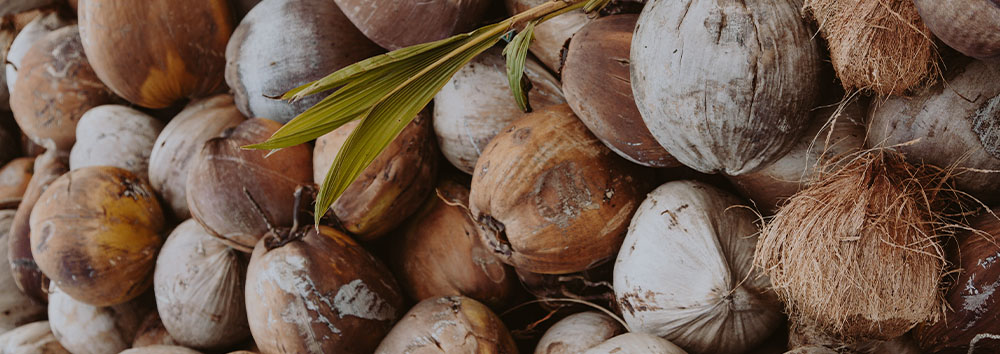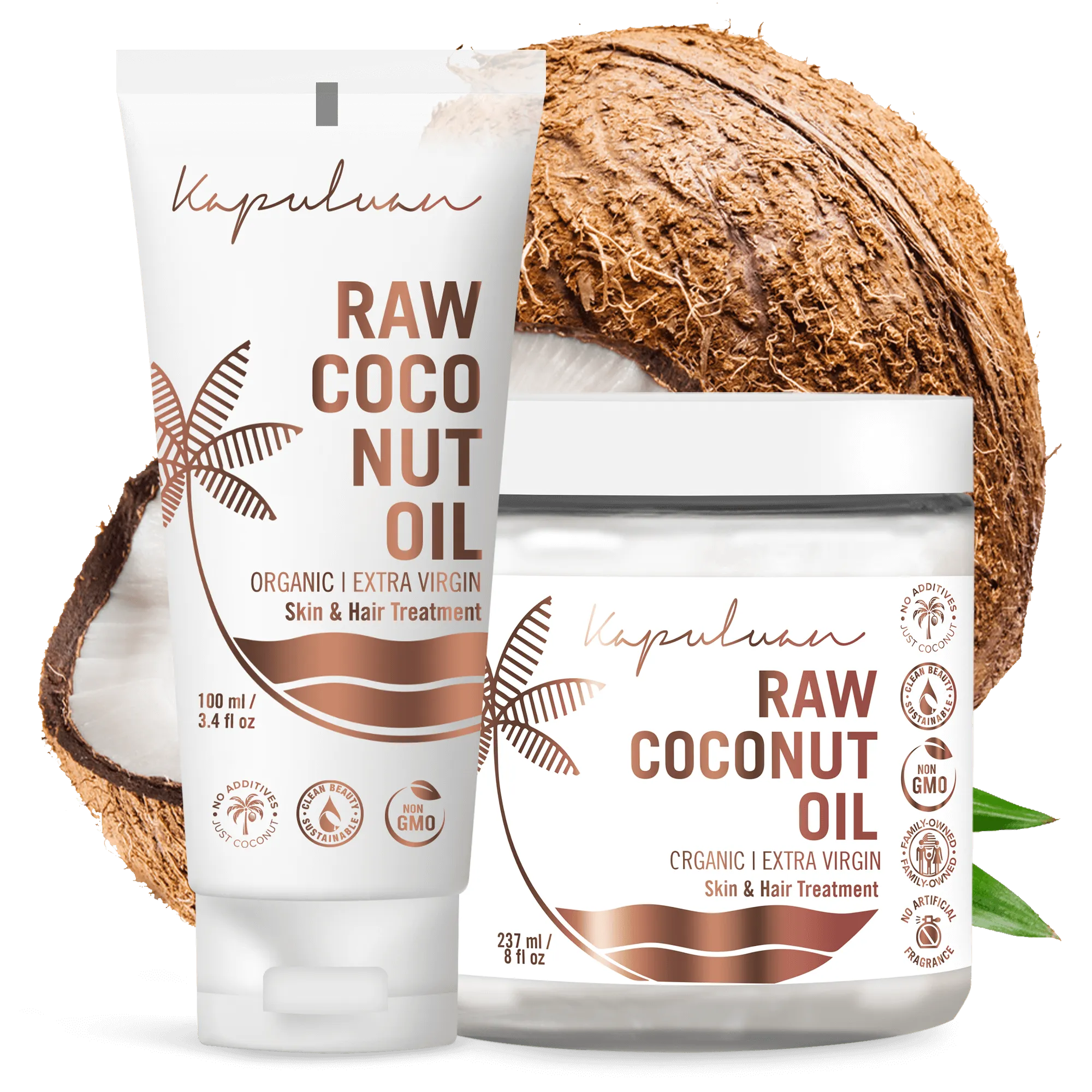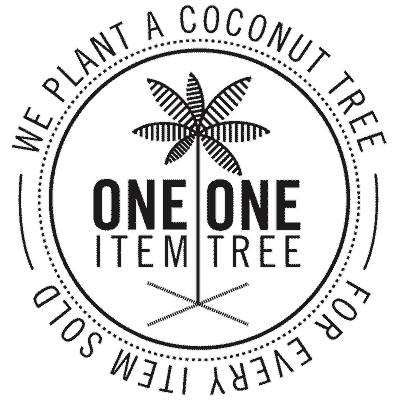
How would you like to consume different types of coconut oil made from these moldy (yes, that is mold) coconuts?
Well, you might be surprised.
With the popularity of coconut products, marketers are losing their minds with opportunities to take advantage of the world’s bountiful fruit (and tree).
This has led to more marketing jargon and false promises than a political campaign.
While most people use coconut products because they are believed to be healthy, misleading information has caused many people confusion. These oils are not just stripped of nutrients and the expected benefits, but they are potentially using toxic products. This toxicity exploits people and our planet.
Even worse, people use the wrong type of coconut oil in their food, for oil pulling, and on their skin.
We are in a time when it’s tough to understand what is happening in our world. It’s hard to know what we are contributing to, what we are putting in or on our bodies, and what consequences our decisions have on ourselves, our families, and our planet.
You won’t find Kapuluan boasting or making wild claims. We are committed to transparency in everything from our supply chain to our products, packaging, and communication methods with our customers. We want to offer accurate information people can trust to make the right decisions.
Here we’ll cover the different types of coconut oil, where they come from, what they are used in, and what all this means.
The Different Types of Coconut Oil
Copra or Crude Coconut Oil or Coconut Oil (cocos nucifera)
While the coconut palm is indigenous to the Philippines, its history as an organized industry began about 150 years ago. More industrialized nations, driven by scarcity of other oils, began to recognize the value of coconut oil and fresh coconut meat. This led to plantations for increased Copra (CNO) production for world commodity markets.
CNO can be found in many applications listed as Coconut Oil. This is in body and hair lotions; soaps and detergents; cooking oil, and all applications that call for shortening; medications for abrasions, skin rashes, and burns; even as lighting and engine fuel oil.
Traditionally, coconut oil has been extracted from the dried coconut meat flesh of often-rotten nuts, a product called “copra.” This partially processed product is dried over a few days. This is often labor-intensive and dirty work in remote locations limited to men.
Coconut Farmers in the Philippines produce copra while struggling to survive a way-of-life exploited by industrial agriculture and crippled by disasters like Typhoon Haiyan.
Copra is transported by any means possible to large industrial oil mills that process it using costly capital equipment and toxic chemicals to sterilize it. If transportation to the mill takes too long, mold or bacterial growth occurs. This leads to rotten coconut fruits.
Plus, commercial refinement at high pressures with chemicals removes the coconut’s healthy antioxidants and other beneficial components. This changes a highly nutritious and natural product into something toxic.
Refined Coconut Oil or RBD Coconut Oil (refined, deodorized, bleached) or Carrier Oil
The oil is derived from dried coconut meat – copra. The crude oil is repeatedly filtered and then bleached in the process, as the filtration is done using calcareous clays. Then, it is heated to a very high temperature to deodorize the oil while killing germs or fungal spores. Afterward, sodium hydroxide (Na (OH) 2) is added and filtered to remove the mono-fats or free fats.
Finally, in some cases, it is hydrogenated. This ensures that no unsaturated fatty acids are left in the oil, which elongates the shelf life considerably.
RBD oil is used to create variety of products, such as massage oils, body balms, lip balms, lotions, and cold process soaps. It is one of the most preferred oils in soap making because soaps with coconut oil are complicated. This oil retains more water than those consisting of other oils and therefore increases manufacturer yields. It is more soluble in hard water and salt water than other soaps allowing it to lather more easily. Coconut oil is also used in cosmetic manufacturing industries.
Virgin Coconut Oil, Unrefined Coconut Oil, or Extra Virgin Coconut Oil
This category remains a mess. Unrefined coconut oil usually refers to “virgin” or “pure” coconut oil. This coconut oil becomes expeller pressed, extracted from fresh coconut meat rather than dried. Fresh coconut meat usually undergoes one of two processes: wet milling or quick drying.
Quick drying, the most common method, promptly dries the coconut meat, and the oil is mechanically expressed. Wet milling refers to the process in which the coconut milk is expressed from fresh meat and then boiled, fermented, or separated from the milk using enzymes or a centrifuge.
Due to the quick process, the resulting oil does not require bleaching or additives. It isn’t exposed to extremely high heat levels like its refined coconut oil counterpart. It retains the distinct flavor and odor of coconut. However, high heat is often applied and severely affects the composition and nutrient quality of the coconut oil.
These oils can be found everywhere. And they are the most abused in terms of marketing. It’s hard for most people to differentiate one oil from the others. Some are of inferior quality and not fit for consumption or personal care use.
Some of the typical traits you will find with these oils: a brown color at the bottom of the jar, a very nutty or roasted smell (it been cooked), and a strong, unpleasant taste.
Raw Coconut Oil
Raw Virgin Coconut Oil is considered Functional Food because it has healing benefits beyond its nutritional contents and is used in Traditional and Modern Medicine.
100% natural with high lauric acid (53.2%) content, full MTCs, Cholesterol Free, and Non-Trans-Fat, this type of coconut oil is produced from organically grown coconuts with no fertilizers, no Pesticides, and Non-GMO.
Naturally processed, raw virgin coconut oil happens through properly selecting newly harvested matured coconuts the trees produce. The oil process starts with grating the meat, which is then wet and cold pressed for extraction of coconut milk. The natural separation of oil comes through the centrifuge machine with cooling systems. The oil is then filtered and vacuum dried to remove moisture.
Raw coconut oil is the only oil that contains the full composition of nutrients, including MCTs and lauric acid.
It is the only coconut oil you should consume.
Unless you’re ok with poor-quality products, rancidity, chemicals, and exploitation of people and our planet.
DME Coconut Oil
Direct Micro Expelling (DME) technology was invented to return coconut processing to the farms where the nuts are grown. The primary benefit of DME coconut oil, besides being of the finest quality, is that it can be implemented in rural farming communities. This creates an opportunity for small-scale farmers.
Farmers are often exploited and left at the very end of the value chain in the coconut market.
Farmers, of whom 60% live in extreme poverty.
The DME™ process uses a manually operated cold-pressing unit to produce raw oil from fresh coconuts. Turning freshly harvested coconuts into raw hand-pressed coconut oil takes less than an hour. This Australian technology is the quickest process in the world and uses no fuel or resources in its production.
Because the oil is produced so quickly, the concern of mold growth or the danger of other impurities is nonexistent. There is no time for nutrients to break down or for the fruit to begin rotting. This is one of the things that sets DME apart from every other coconut oil.

3 little eyes (or 2 eyes and a nose)
Once a coconut is husked, it exposes the ”three little eyes” to the world. These eyes are membranes, exchanging oxygen and other gasses with the environment. As the coconut oxidizes, enzymes break down the oil inside, creating free fatty acids. These cause harshness in flavor and a breakdown of the antimicrobial value of the coconut oil. Once the coconut oil is pressed, it is stable since it’s been separated from the enzymes. But that time to press is critical.
Factory coconut oil can take anywhere from two days to two weeks or longer for pressing from the time of husking. But DME™ coconut oil is pressed within 1 hour of husking the nut, most often as quickly as 20 minutes. DME™ truly is the freshest coconut oil you can buy.
Not All Equal
So, when looking for what coconut oil to use, remember there are different types, not all equal. Understanding all the different types will help you decide when purchasing the best coconut oil.
While there are varieties of coconuts harvested for the coconut water, meat, and oil, producing coconuts at a fast rate can risk lowering the quality of the coconut oil. This remains a significant concern if you want coconut oil for your body, especially your skin and hair.
Many people are concerned about using coconut oil for a beauty regimen. They see articles that state how coconut oil should not be used for the face or even ingested. Mainly, it’s because someone bought refined, overly manufactured coconut oil with unknown origins.
If you buy coconut oil without considering its general makeup, you may get upsetting results. Your skin and body may probably react.
Do your research and be aware that just because it says “coconut oil” does not mean it’s the right product to receive all the health benefits.



